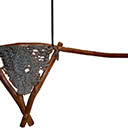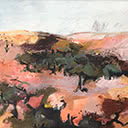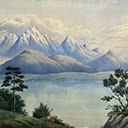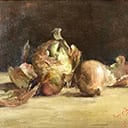O3 #2, Ozone II
115 x 230 cm
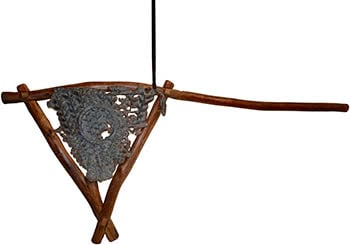 Relative size
Relative size
EXHIBITED
New Zealand at Brisbane World Expo, 1988
Chris Booth is now well known for his monumental
boulder public artworks such as Gateway 1988-
1990, Albert Park, Auckland; Rainbow Warrior
Memorial, 1988-1990, Matauri Bay and Nga Uri O
Hinetuparimaunga (with Diggeress Te Kanawa),
2004-2005, entrance to Hamilton Gardens.
He ambitiously started out in the early 70's making maquettes of very large stone works. Lacking financial backing he adopted Arte Povera techniques to achieve environmental visions by using found materials such as pebbles, sticks and molten recycled bronze. O3 II came out of this period. A stand alone artwork that was originally the transom of a skeletal boat, O3 II, which represented New Zealand at the Brisbane World Expo in 1988. O3 II is the younger sister of two skeletal boats, the first being O3 (O Three) which was purchased by the Auckland Art Gallery from their exhibition in 1986, Aspects of Recent New Zealand Art Sculpture 2. They were both built to highlight the effect of the depletion of the ozone layer due in part to the release of CFC's, which had left New Zealand particularly exposed to ultraviolet light. O3 II, is a relic, dead - beached and bearing 'fossilised' symbols of life in bronze.
I wanted the bronze to have a distinctly local feel - from the earth where I live. In part the effect was gained by using molten bronze in the same way a painter might paint using a mixture of techniques between careful management through to free throwing of the pigment - in this case molten bronze. The bronze was thus 'painted' into impressions in green sand laid on the ground at my home in Kerikeri. A large diameter rubber O ring and branding iron. Number 3 were carefully imprinted into the green sand over which I laid plaited nikau fronds. Wearing my big foundry boots I shuffled all over the fronds pushing them into and over the previously made patterns. The woven nikau was carefully pealed back to reveal a crisp beautiful pattern. Following this, molten bronze was accurately poured into the pattern then thrown from the red hot crucible to freeze the patterns in bronze forever. Chris Booth

